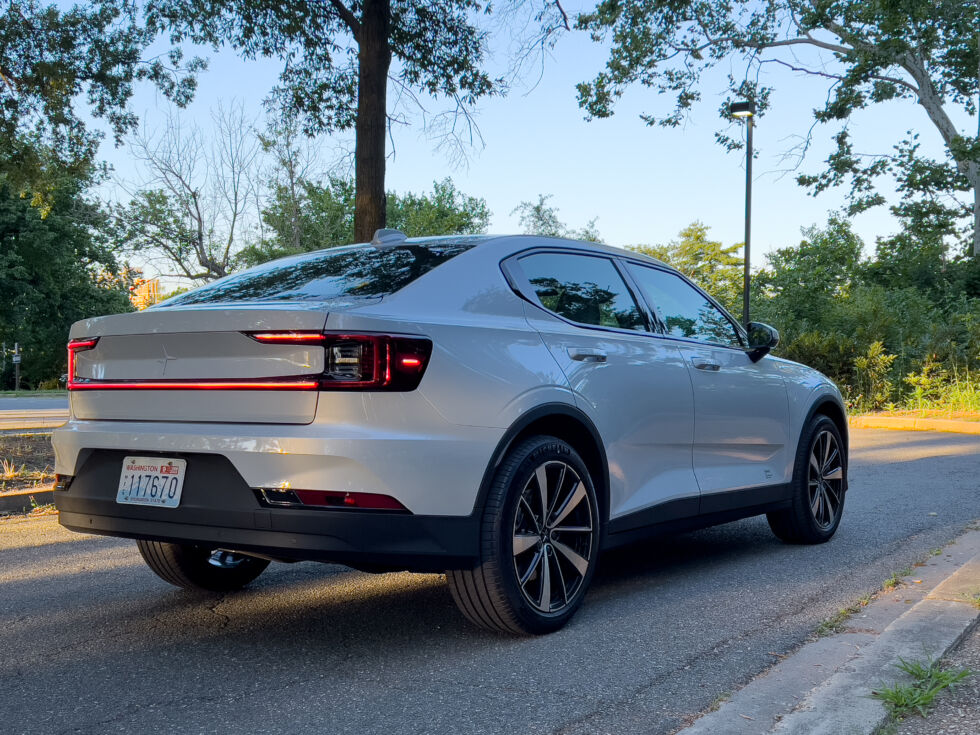
Jonathan Gitlin
Polestar is riding pretty high right now. Now listed on the NASDAQ exchange, the company is preparing to introduce three new electric vehicles over the next three years: a large SUV in 2023, a smaller crossover in 2024, and a flagship (read: expensive) four-door coupe in 2025. In March, the company introduced a new variant of the Polestar 2 fastback sedan, the $48,400 Polestar 2 Long Range Single motor.
And after a few days of driving one, I think it’s another data point in favor of the argument that less power sometimes means more fun when it comes to EVs. But I must confess I’m scratching my head about the “long range” part, given the useable capacity of the battery pack and the EV’s energy efficiency.
As the name suggests, the biggest mechanical change compared to the dual-motor version we drove in 2020 is the loss of the rear motor. Polestar has also made some changes to the way it sources and makes components like the aluminum alloy wheels and the battery case; the company says these changes reduce the carbon footprint of the car’s manufacturing by just under 3,000 lbs (1,350 kg).
Half the number of motors doesn’t quite equal half the power, as the motor driving this Polestar 2’s front wheels has been slightly uprated in terms of power to deliver a peak of 231 hp (170 kW). Torque output remains identical to the drive motors in the dual-motor Polestar 2, at 243 lb-ft (330 Nm).

Jonathan Gitlin
And it doesn’t mean half the performance either—7 seconds from a standstill to 60 mph (7.4 seconds to 100 km/h) isn’t exactly slow, although top speed is capped at 100 mph (160 km/h) rather than 127 mph (205 km/h) for the twin-motor car.
When we drove the launch model Polestar 2, it had every options box ticked. The single-motor version arrived in a much more basic specification. It had the $4,000 Plus pack, which gets you a heat pump (for better winter efficiency), a full-length glass roof, an uprated sound system, a rather cool fabric for the seats, and black ash wood trim. The interior fit and finish seems to have improved over the last couple of years—not that it was particularly bad to begin with.
What it didn’t have was either the technology package or the performance package. The former adds things like adaptive cruise control and better blind spot monitoring and safety alerts, plus better headlights and fog lights that turn their beams as you corner, while the latter brings suspension setup changes, summer performance tires, and some very fancy hand-adjustable dampers made by Öhlins.
Any worries that gold-painted suspension components and super-sticky rubber is a prerequisite for driving fun can be dispelled here.











![ROSE IN DA HOUSE I BE MY BOYFRIENDS 2 [OFFICIAL TRAILER]](https://cherumbu.com/wp-content/uploads/2022/01/ROSE-IN-DA-HOUSE-I-BE-MY-BOYFRIENDS-2-OFFICIAL-150x150.jpg)

